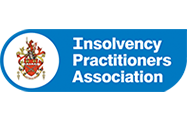If a business goes bust and you’re owed money, it is natural to want to know when you’ll get paid. Unfortunately, when this happens, there is usually very little you can do to influence the outcome, and that all depends on your status as a creditor. We often find clients wondering “am I a secured, preferential or unsecured creditor?”. And more often than not, your business will be an unsecured creditor, which unfortunately means your debt is low down on the list to be repaid. Read on to find out the differences between types of creditors and which category you fall into.
When a business enters into an insolvency process, it is the duty of the liquidators to sell any assets that the business is in possession of to enable any debts to be repaid. The order in which these debts are repaid is set out in the Insolvency Act 1986. And little has changed since then.
Secured Creditors with a Fixed Charge:
At the top of the list are secured creditors with a fixed charge. This usually includes the likes of banks and asset finance companies. A charge is placed over an asset when money is borrowed by a company from these types of businesses and they hold title over the asset. The secured creditors with a fixed charge will usually take possession of these assets and sell them to recover the monies owed to them. These assets include things like vehicles, property and machinery.
Preferential Creditors & HMRC:
This is the area where we have seen the most change in status for a creditor. In 2002, the Enterprise Act demoted HMRC to sit with unsecured creditors, meaning debts to HMRC were low down in the hierarchy. However, following the introduction of the Finance Act in 2020, HMRC has now jumped back up to become a secondary preferential creditor.
A preferential creditor is generally an employee of the business who is owed wages or holiday pay, for example.
Despite the rise in creditor status for HMRC, it is important to note that this status is only in relation to specific types of debts that are owed. The debts included within the secondary preferential status are effectively the debts where a business has collected taxes on HMRC’s behalf, for example, National Insurance Contributions, PAYE tax, VAT payments from customers etc.
Secured Creditors with a Floating Charge:
If you are a supplier to a business then this is where you may find yourself when a business falls into an insolvency process. Floating charges are usually held on stock, raw materials, and other assets that a business has possession of which don’t have a fixed charge. The way that assets with a floating charge are dealt with follows a formula that takes costs and a “prescribed part” of the sale of the assets into account.
Unsecured Creditors:
This is where the majority of businesses will be situated as a creditor when their customers enter into insolvency. Unsecured creditors include the likes of some employees, contractors, suppliers, other HMRC debts that are related to company taxes and anybody else who is owed money by the business and doesn’t fit into one of the categories above. As you can see, there is the potential for funds to be very limited by the time the liquidators reach the unsecured creditors so the more evidence that you have of your debt and debt collection process with your client the better.
Shareholders:
Shareholders of a business are always the last on the list to recover any monies owed to them after all other categories have been satisfied.
So what can you do?
If you find yourself as an unsecured creditor during an insolvency process there are lots of things that you need to be aware of and involved in. This is where we can help you. A meeting with all creditors will usually take place, and a proposal from the appointed administrator will be discussed and potentially approved. It is important that you understand what the proposal means for you as an unsecured creditor. You may also wish to become part of a creditors’ committee.
We can help you to navigate this process and ensure that your business is taking all of the necessary steps to maximise your chance of recovering monies owed to your business during an insolvency process. However, it is far more important for you to be on top of the debts owed to you long before an insolvency process begins. So if you’re seeing the red flags and your customer is struggling to pay you then it’s important to react quickly. Contact us today to find out more about how we can help you.





